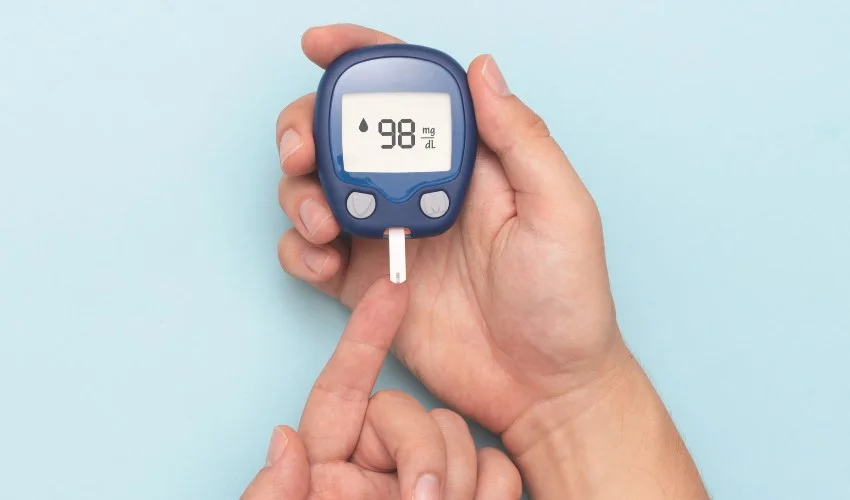Regular physical activity plays a crucial role in the management and control of type 2 diabetes. Engaging in exercise and staying physically active can have a multitude of positive effects on blood sugar levels, insulin sensitivity, weight management, cardiovascular health, and overall well-being. In this article, we will explore the various benefits of regular physical activity for diabetes control and provide evidence-based information to help type 2 diabetic patients and their caregivers understand the importance of incorporating exercise into their daily routines.
Improved Blood Sugar Control
Maintaining stable blood sugar levels is essential for individuals with type 2 diabetes. Regular physical activity has been shown to have a profound impact on blood sugar control. When you engage in exercise, your muscles use glucose as fuel, which leads to a decrease in blood sugar levels. This increased glucose uptake by muscle cells reduces insulin resistance and helps to improve glycemic control.
A study conducted by the American Diabetes Association demonstrated that both aerobic exercises and resistance training significantly improve glycemic control in individuals with type 2 diabetes. Aerobic exercises such as brisk walking, cycling, or swimming, as well as resistance training involving weights or resistance bands, have shown positive effects on reducing blood sugar levels and improving insulin sensitivity. For example, aerobic exercises performed for 150 minutes per week, spread across 3-5 days, can lead to a reduction in HbA1c (a marker of long-term blood sugar control) by 0.6-1.0%. Similarly, resistance training performed 2-3 times per week can also result in a reduction in HbA1c by 0.5-1.0%. These findings emphasize the importance of incorporating both aerobic exercises and resistance training into a comprehensive exercise program for optimal blood sugar control.
Increased Insulin Sensitivity
Insulin sensitivity refers to the body’s ability to effectively utilize insulin to transport glucose from the bloodstream into cells. In individuals with type 2 diabetes, insulin resistance occurs, making it challenging for the body to use insulin efficiently. Regular exercise can improve insulin sensitivity, allowing cells to utilize insulin more effectively and reducing the need for higher insulin levels.
A study published in the journal Diabetes Care found that regular exercise enhances insulin sensitivity, leading to better blood sugar regulation. By engaging in physical activity, individuals with type 2 diabetes can significantly improve their body’s response to insulin and promote better glycemic control.
Weight Management
Weight management is crucial for individuals with type 2 diabetes, as excess weight and obesity are risk factors for the development and progression of the condition. Regular physical activity, combined with a balanced diet, plays a fundamental role in achieving and maintaining a healthy body weight.
Physical activity helps in weight management through several mechanisms. Firstly, exercise promotes calorie expenditure, increasing the energy demands of the body. This increased energy expenditure can aid in weight loss and prevent weight gain. For example, a moderate-intensity activity like brisk walking can burn around 300-400 calories per hour. Secondly, regular exercise boosts metabolism, leading to an increased rate of calorie burning even at rest. This effect is particularly beneficial for individuals with type 2 diabetes, as they often have a slower metabolic rate. Thirdly, physical activity helps in preserving lean muscle mass, which is important for maintaining a healthy metabolic rate. Strength training exercises, such as lifting weights or using resistance bands, can help build and maintain lean muscle mass.
A study published in the journal Medicine and Science in Sports and Exercise found that combining aerobic exercises with resistance training resulted in greater reductions in body fat and improvements in body composition compared to aerobic exercises alone . By incorporating both aerobic exercises and resistance training into their exercise routine, individuals with type 2 diabetes can effectively manage their weight and reduce the risk of complications associated with obesity.
| Type of Exercise | Frequency | Duration |
|---|---|---|
| Aerobic Exercises | 3-5 days per week | 150 minutes per week (moderate intensity) |
| or 75 minutes per week (vigorous intensity) | ||
| Resistance Training | 2-3 days per week | At least 1 set of 8-10 exercises targeting major muscle groups |
| 10-15 repetitions per set | ||
| Flexibility Exercises | 2-3 days per week | 10-15 minutes per session |
| Balance Exercises | 2-3 days per week | 10-15 minutes per session |
It’s important to note that these recommendations may vary based on an individual’s fitness level, overall health, and specific needs. Therefore, consulting with a healthcare professional or certified exercise specialist is highly recommended to tailor an exercise program to individual circumstances.
Remember to start with activities that are suitable for your current fitness level and gradually increase the intensity and duration of physical activity as your fitness improves.
Cardiovascular Health
Individuals with type 2 diabetes are at a higher risk of developing cardiovascular complications such as heart disease and stroke. Regular physical activity can significantly reduce this risk by improving cardiovascular health.
Engaging in exercise strengthens the heart muscle, making it more efficient at pumping blood. It also helps to lower blood pressure and improve cholesterol profiles, reducing the risk of heart disease. Regular physical activity promotes healthy blood vessel function, enhances circulation, and helps to maintain optimal body weight, all of which contribute to a healthier cardiovascular system.
A study published in the Journal of the American Medical Association (JAMA) demonstrated that a behavioral intervention strategy involving regular physical activity significantly improved cardiovascular health in patients with type 2 diabetes. The intervention resulted in reduced blood pressure, improved lipid profiles, and decreased risk of cardiovascular events. This highlights the significant impact of exercise on cardiovascular health in individuals with diabetes.
Stress Reduction and Mental Well-being
Living with diabetes can often lead to increased stress levels and impact mental well-being. Regular physical activity has been shown to be an effective stress management tool and mood booster.
Exercise stimulates the release of endorphins, which are known as “feel-good” hormones. These endorphins help alleviate stress, reduce anxiety, and improve symptoms of depression. Physical activity also promotes better sleep patterns, increases energy levels, and enhances overall quality of life for individuals with diabetes.
A study published in the journal Sports Medicine found that physical activity and exercise are associated with improved mental health outcomes, including reduced symptoms of depression and anxiety. By incorporating regular exercise into their routine, individuals with type 2 diabetes can experience the positive effects of physical activity on their mental well-being.
Regular physical activity is a vital component of diabetes management and control. The benefits of exercise for individuals with type 2 diabetes extend far beyond improved blood sugar control. Engaging in physical activity can enhance insulin sensitivity, aid in weight management, promote cardiovascular health, reduce stress, and improve mental well-being. By incorporating regular exercise into their daily routines, individuals with diabetes can significantly improve their overall health and well-being.
It is important to consult with healthcare professionals and tailor an exercise program that suits individual needs and abilities. Remember to start slowly and gradually increase the intensity and duration of physical activity. By making regular exercise a priority, type 2 diabetic patients and their caregivers can take control of their health and effectively manage their condition.




